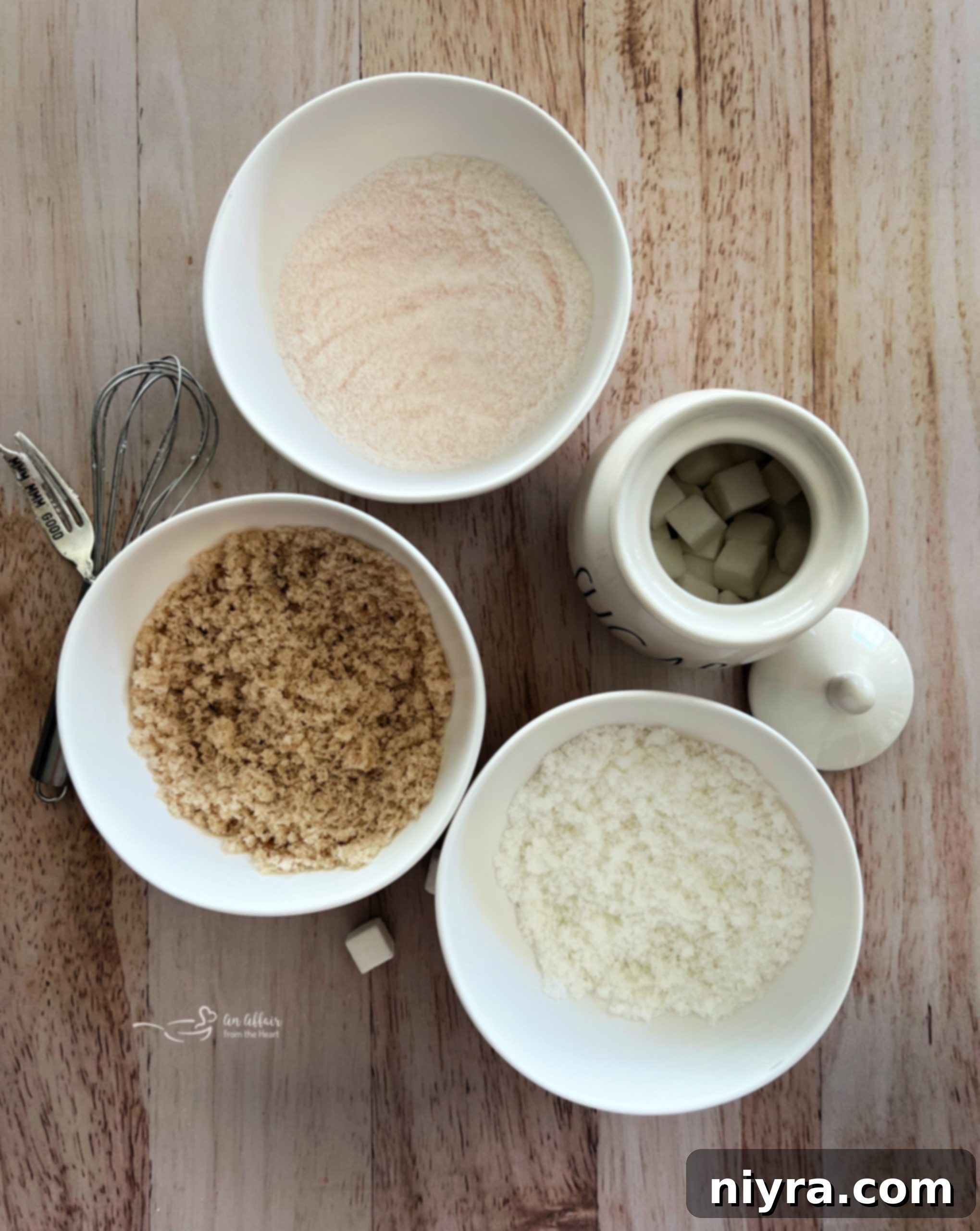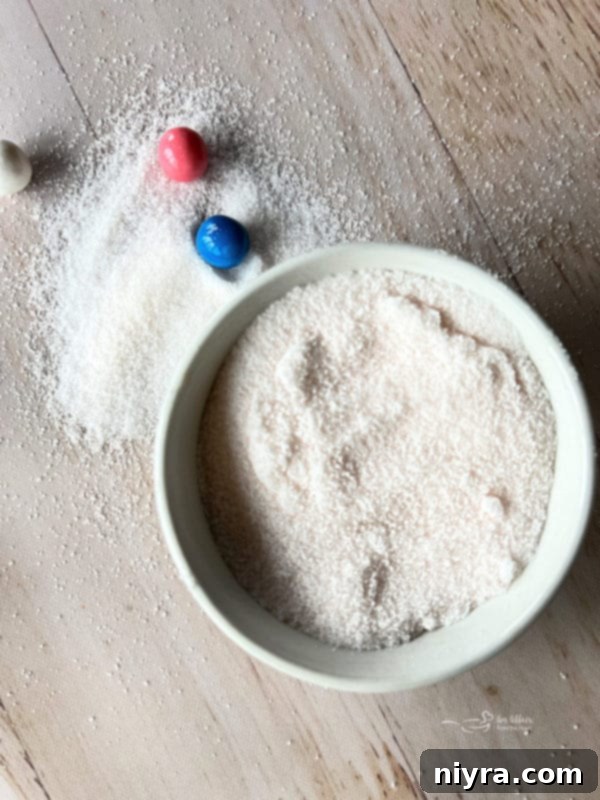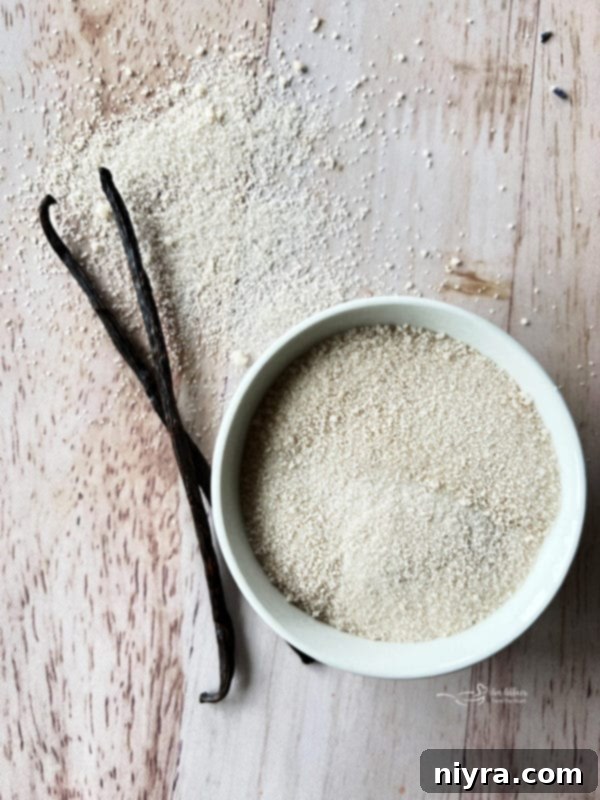Transforming ordinary sugar into extraordinary flavored sugars is surprisingly simple, often requiring nothing more than a trip to your spice cupboard! By leveraging the extracts you likely already have on hand, you can craft an endless variety of sweet sensations. These delightful sugars are perfect for stirring into your morning tea or coffee, dusting over freshly baked cookies or decadent desserts, or sprinkling onto fresh fruit for an added touch of gourmet flair. Let your culinary imagination soar and discover the countless ways to enhance your favorite dishes!
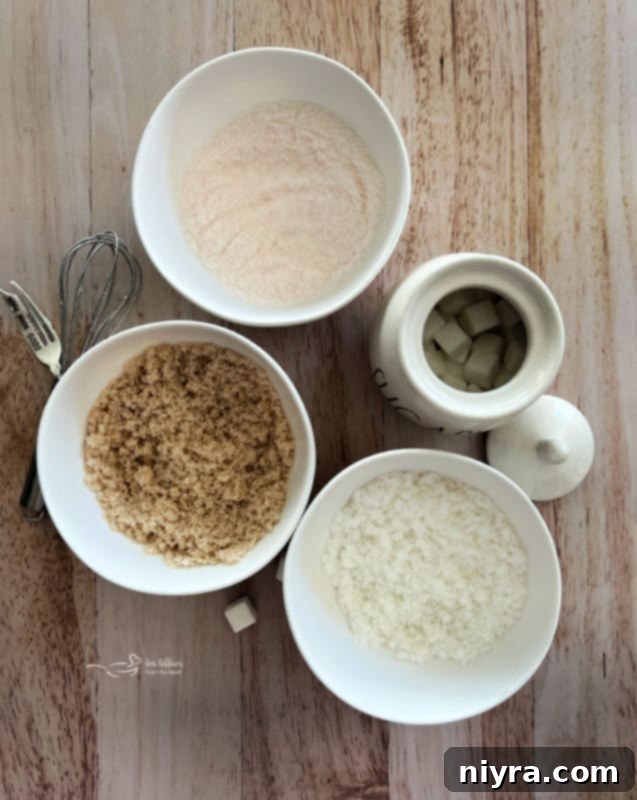
Have you ever considered elevating your everyday granulated sugar with a burst of flavor? It’s an incredibly simple and cost-effective kitchen hack that opens up a world of culinary possibilities. Using common baking extracts, you can easily create custom flavored sugars that will surprise and delight your taste buds, all while making the most of ingredients you already possess.
Unlock a World of Flavor: Can You Flavor Sugar with Extracts?
Absolutely, yes! It’s so remarkably straightforward that many home cooks overlook this fantastic technique. Sometimes, the simplest ideas are the most impactful. While some might think, “Everyone knows that!”, the truth is, many clever kitchen tips often go unnoticed until someone shares them. The beauty of flavoring sugar with extracts lies in its immediacy and flexibility, allowing you to quickly create bespoke flavors for any occasion.
Why Make Your Own Flavored Sugar? The Benefits Are Sweet!
Beyond the sheer joy of customization, there are numerous compelling reasons to embark on your flavored sugar journey:
- Cost-Effective Creativity: Store-bought flavored sugars can be pricey and offer limited options. Making your own uses inexpensive granulated sugar and extracts you likely already have, saving you money while providing endless variety.
- Unleash Custom Flavors: Tired of plain vanilla? Crave a hint of lavender in your tea or a zesty orange sprinkle on your muffins? Extracts allow you to craft any flavor imaginable, from classic almond and lemon to exotic rosewater or bold coffee.
- Control Over Ingredients: When you make it yourself, you control what goes in. No artificial colors, preservatives, or sweeteners – just pure sugar and natural extracts.
- Thoughtful Homemade Gifts: Beautifully packaged jars of homemade flavored sugar make exquisite and personal gifts for holidays, birthdays, or as hostess tokens.
- Elevate Everyday Dishes: A sprinkle of cinnamon-sugar takes toast to new heights. Imagine a vibrant lemon sugar on your crepes or a rich almond sugar stirred into your hot chocolate. It’s an instant upgrade for countless recipes.
Flavored Sugar: A Baker’s Secret Weapon
Flavored sugar isn’t just for beverages; it’s a fantastic addition to your baking arsenal. I recently discovered this while preparing some Pie Crust Cookies. My initial thought was to dust them with a classic cinnamon-sugar blend, but I was planning to use them as a topping for a delicate berry dessert. Cinnamon, while wonderful, simply wouldn’t complement the berry flavors. If I were pairing them with apples, pears, or peaches, it would have been perfect, but this particular dessert called for something distinctly different. This situation sparked my experimentation with extracts, leading to delightful and perfectly harmonized results.
Flavoring vs. Infusing Sugar: Understanding the Difference
When it comes to enhancing sugar, it’s important to distinguish between flavoring and infusing. While both methods add character to sugar, they achieve it differently and with varying results. In a word, they are not the same.
Infusing sugar typically involves placing aromatic ingredients like vanilla beans, coffee beans, fragrant rose petals, or fresh herbs directly into the sugar and allowing them to sit for an extended period. This process can take anywhere from a few days to several weeks, allowing the sugar to slowly absorb the subtle aromas and flavors. While a wonderful method for a nuanced taste, the flavor profile tends to be more delicate, and the preparation time is considerably longer. You often remove the infusing agents before using the sugar, leaving behind a sugar that whispers its flavor rather than shouts it.
Flavoring sugar with extracts, on the other hand, is a rapid and direct approach. Extracts are concentrated flavor agents, meaning you can achieve a potent and immediate flavor in your sugar. This method is incredibly efficient, producing perfectly flavored sugar within minutes, rather than weeks. Moreover, you have precise control over the intensity of the flavor; simply add more or less extract to suit your preference. This quick turnaround makes extracts an ideal choice for spontaneous baking projects or when you need a specific flavor on demand.

How to Flavor Granulated Sugar with Extracts: Your Guide to Sweet Success
Adding flavor to granulated sugar is an incredibly simple process that begins with selecting your desired extract. The possibilities are truly endless, limited only by your imagination and the contents of your pantry. Consider what flavors you enjoy and how you plan to use your custom-made sugar.
As you can see from the image above, I often have a variety of flavorings on hand, ranging from classic liquids to thicker pastes. For example, a tiny bottle of bubblegum extract, which I use in my popular bubblegum cupcakes, is highly concentrated. With such potent extracts, you’ll need significantly less to achieve a strong flavor. The key is to start with a small amount and adjust to your liking – a little experimentation goes a long way!

Choosing Your Extracts: A World of Flavors
The selection of extracts available today is vast, allowing you to tailor your flavored sugars to any preference or occasion. Here are some popular ideas to get you started:
- Classic Baking Extracts: Vanilla, almond, lemon, orange, peppermint, coconut. These are versatile and can be used in almost any sweet application.
- Floral & Gourmet Extracts: Lavender, rosewater, orange blossom. Perfect for sophisticated desserts, teas, or elegant gifts.
- Fruity Extracts: Raspberry, strawberry, cherry, banana. Ideal for topping fruit salads, yogurt, or adding to summer drinks.
- Spice & Warm Extracts: Cinnamon, ginger, rum, bourbon. Great for autumnal baking, coffee, or spiked hot chocolates.
- Novelty Extracts: Bubblegum, cotton candy, root beer. Fun for kids’ treats or unique party favors.
Always opt for high-quality extracts for the best flavor. Pure extracts, as opposed to artificial flavorings, will give you a truer and more vibrant taste in your sugar.
The Simple Steps to Making Flavored Sugar
1. Gather Your Ingredients
The beauty of this project lies in its simplicity. All you will need are two basic components: granulated sugar (standard white sugar works best for most applications) and your chosen extract. For this recipe, we’ll start with a manageable quantity to allow for easy experimentation and drying. Consider using a clear glass bowl for mixing, as it allows you to observe the color and consistency as you work.
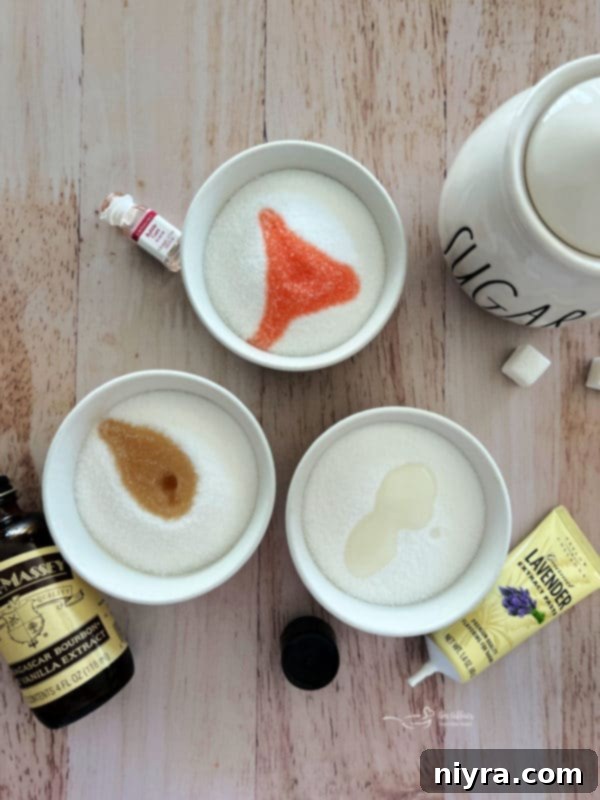
2. Add the Extract
Carefully add your chosen extract to the granulated sugar in the bowl. It’s crucial to start conservatively, especially if using a highly concentrated extract. Begin with the amount suggested in the recipe card below, or even slightly less if you’re unsure. You can always add more to intensify the flavor, but you can’t take it away! Drizzle the extract evenly over the sugar to facilitate better mixing.
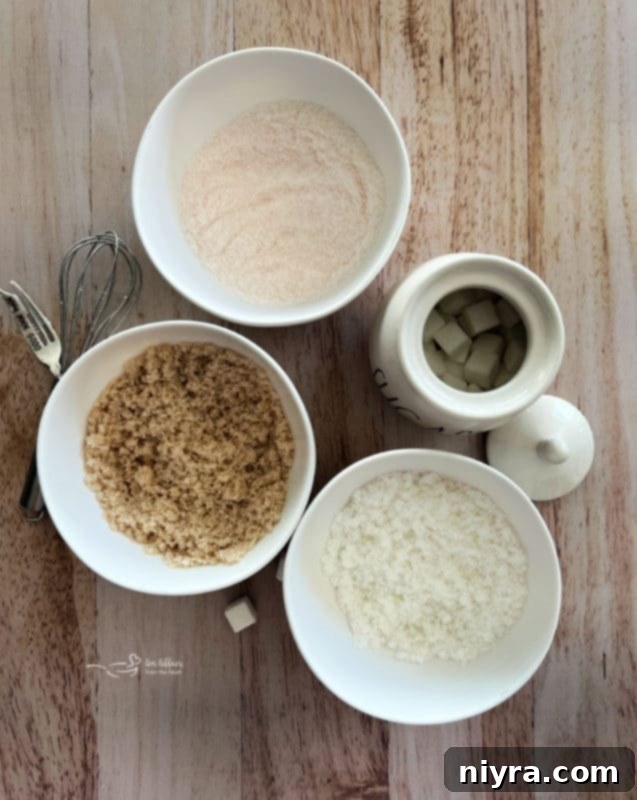
3. Combine Thoroughly
Using a fork or a small whisk, gently but thoroughly combine the sugar and the extract. The goal is to ensure that every sugar granule is coated with the flavoring. Continue mixing until the sugar appears uniformly flavored and any initial clumps from the liquid extract have been broken up. At this stage, you can smell and even taste a tiny bit of the sugar to determine if the flavor intensity is to your liking. If you plan to use the sugar immediately in a recipe where moisture isn’t an issue, such as stirring it into coffee, you can proceed directly!
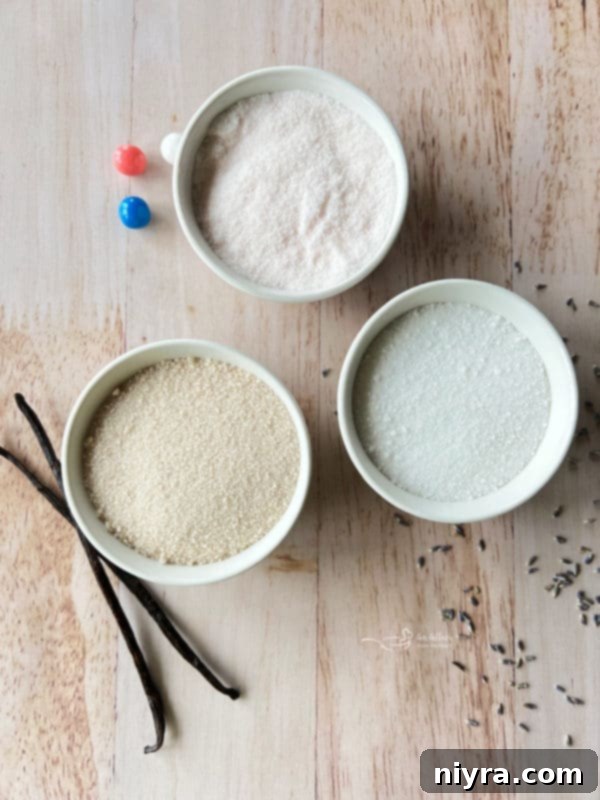
4. Dry and Store Your Flavored Sugar
For longer storage and best results in baking, it’s essential to dry your flavored sugar to remove any moisture introduced by the extract. You can simply leave the sugar spread out in a thin layer in its bowl or on a plate on your kitchen counter for an afternoon, stirring occasionally to expose all surfaces to the air. Spreading it out on a wider surface, like a baking sheet lined with parchment paper, will significantly speed up the drying process. Once the sugar feels completely dry and free-flowing, transfer it to a plastic zippered bag. Use a rolling pin to gently roll out any remaining lumps, ensuring you have a fine, evenly flavored sugar. Store your homemade flavored sugar in an airtight container or a plastic zippered bag in a cool, dry place. When properly dried and stored, it can last for up to a year, ready to enhance your culinary creations!
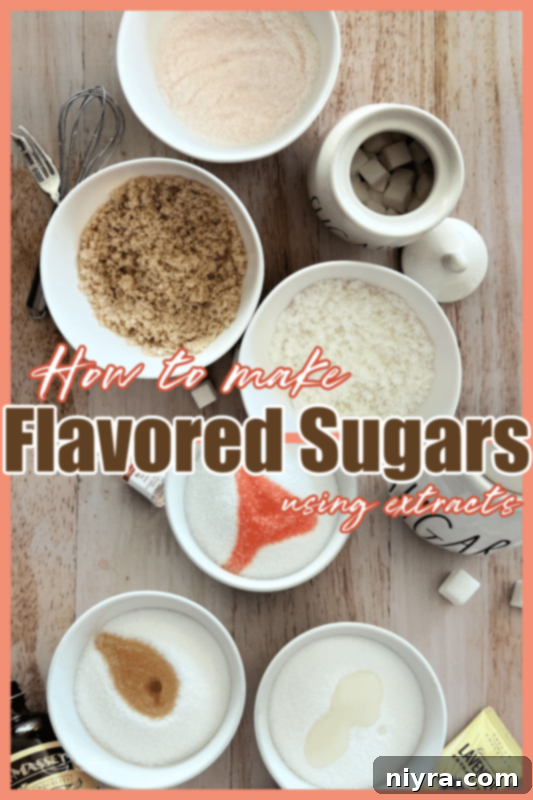
Don’t Forget to Pin It! Share the Sweetness!
Found this guide to creating your own delightful flavored sugars helpful? Make sure to save it for later! Pin this tutorial to your favorite Pinterest board so you can easily revisit these simple steps and inspire others to start their own flavored sugar adventures!
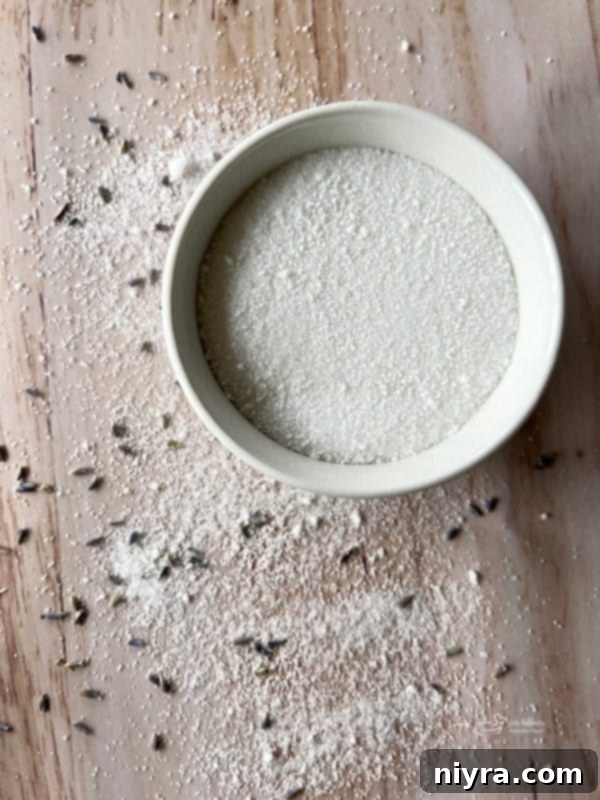
Creative Ways to Use Your Homemade Flavored Sugars
Once you’ve crafted your custom flavored sugars, the possibilities for their use are truly endless. Here are some inspiring ideas:
- Beverages: Stir lavender sugar into hot tea for a calming drink, use vanilla sugar in coffee or hot chocolate, or rim cocktail glasses with lemon or lime sugar for an extra zesty kick.
- Baking & Desserts: Dust cookies, cakes, muffins, or quick breads with a complementary flavored sugar. Imagine lavender-flavored sugar sprinkled on shortbread cookies – a truly elegant treat and a lovely gift! Or, how about bubblegum flavored sugar to dust sugar cookies? Kids absolutely adore them!

- Breakfast & Brunch: Sprinkle vanilla-flavored sugar on pancakes, waffles, or French toast. It’s also fantastic stirred into oatmeal or yogurt.

- Fruit: Elevate a simple fruit salad by sprinkling it with a citrus-flavored sugar like lemon or orange. It adds a delightful sparkle and enhances the natural sweetness.

Recipes and Ways to Use Flavored Sugar
Incorporating flavored sugar into your cooking is simple. Here are some specific recipes where your homemade flavored sugar would shine:
- Old Fashioned Spritz Cookies (try almond or vanilla sugar)
- Cranberry Orange Muffins (enhance with orange or lemon sugar)
- Applesauce Quick Bread (a dash of cinnamon or spiced apple sugar)
- Orange Mocha Latte (stir in a spoonful of orange sugar)
- Fruit Salad (brighten with lemon or berry-flavored sugar)
Can You Flavor Powdered Sugar with Extracts?
While liquid extracts work beautifully with granulated sugar, they are not ideal for directly flavoring powdered sugar. The fine consistency of powdered sugar, combined with its tendency to clump, means that adding liquid extract would likely result in a gooey, uneven mixture that’s difficult to work with.
However, there’s a workaround if you desire flavored powdered sugar! You can create your own by first flavoring granulated sugar as described in this guide. Once your flavored granulated sugar is completely dry, you can then process it in a high-power blender or food processor along with a small amount of cornstarch (typically 1-2 teaspoons per cup of sugar) until it reaches a fine, powdery consistency. This method allows you to have perfectly flavored powdered sugar for dusting or for making homemade glazes.
Alternatively, if you’re simply aiming to flavor an icing or glaze that calls for powdered sugar, it’s far easier to prepare your frosting or glaze as usual and then incorporate the liquid extract directly into the wet mixture. This ensures even distribution and prevents any textural issues with the powdered sugar itself.
Speaking of sugar, did you know you can also transform it into indulgent homemade sugar scrubs? These make fantastic, personalized gifts for any occasion!
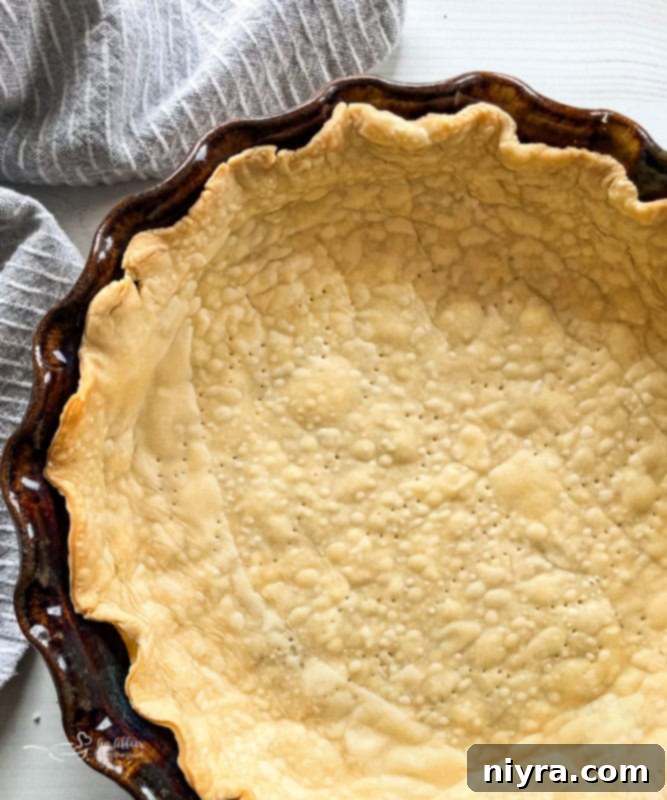
Discover More “How-To” Guides from An Affair from the Heart
If you’ve enjoyed this practical guide on flavoring sugar, I invite you to explore more of my helpful “How-To” posts. My website features an entire “How To” Section dedicated to sharing tips and tricks that make home cooking and baking easier and more enjoyable. Here are just a few of the many useful guides you’ll find:
- How To Blind Bake a Pie Crust (pictured above, a foundational skill for perfect pies)
- Make Your Own Bisquick (a pantry staple, homemade!)
- How to Make a Buttermilk Substitute (never run out of this essential ingredient again)
- How to Make Chocolate Ganache (the secret to silky smooth chocolate glazes)
- Homemade Taco Seasoning (custom flavor, no additives)
- How to Make an Easter Basket Cake (a fun and festive baking project)

Now that you have all the knowledge, let’s get into the kitchen and flavor some sugar! Happy experimenting!

LIKE THIS RECIPE?
Don’t forget to give it a ⭐️⭐️⭐️⭐️⭐️ star rating and
leave a comment below the recipe!

⭐️⭐️⭐️⭐️⭐️ 5 from 13 votes
Print Recipe
How To: Make Flavored Sugars Using Extracts
Making your own flavored sugars is as easy as heading for your spice cupboard! Using extracts you already have on hand, you can flavor them any way you like! Stir into your tea or coffee, dust cookies or desserts, sprinkle over fruit – let your imagination run wild!
Prep Time: 30 mins |
Total Time: 30 mins
Course: “How To” |
Cuisine: American |
Keyword: baking, extracts, granulated sugar, how to flavor sugar, How to flavor sugar with extracts, make flavored sugar, pure extracts, vanilla sugar
Servings: 1 cup |
Calories: 774 kcal |
Author: Michaela Kenkel
Ingredients
- 1 cup Sugar
- 1 teaspoon of extract (your flavor choice)
Instructions
- Add sugar to a small bowl. Add in the extract of your choice.
- Mix with a fork or small whisk until combined.
- Allow to dry and mix again. Roll lumps out with a rolling pin.
- Once the moisture is removed, store it in an airtight container for up to a year.
Notes
For very concentrated flavorings, adjust accordingly.
Nutrition
Serving: 1 | Calories: 774kcal | Carbohydrates: 200g | Sodium: 2mg | Sugar: 200g
This recipe was originally posted on June 17, 2014. It has been updated to improve user experience and reshared on March 22, 2022.
